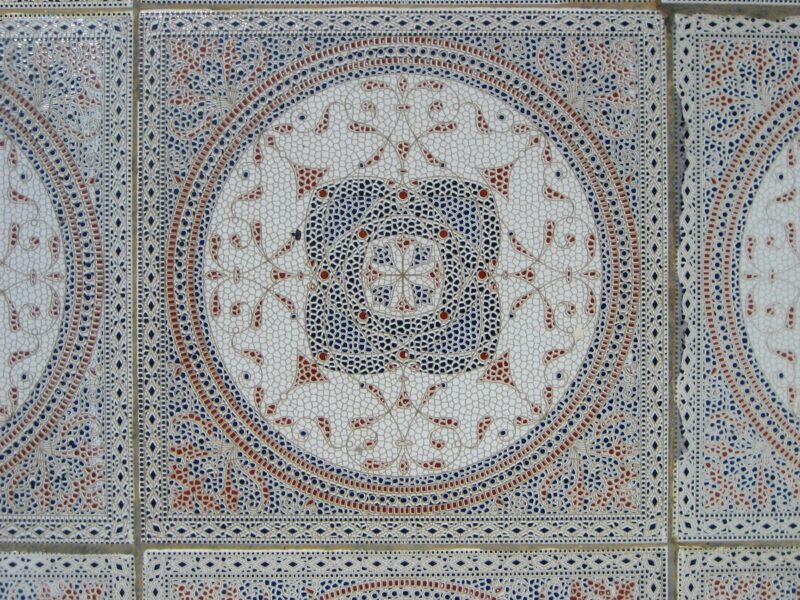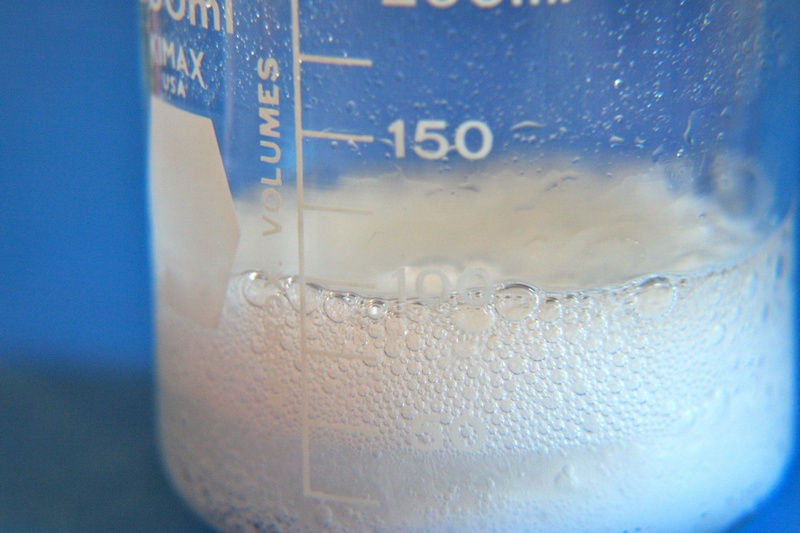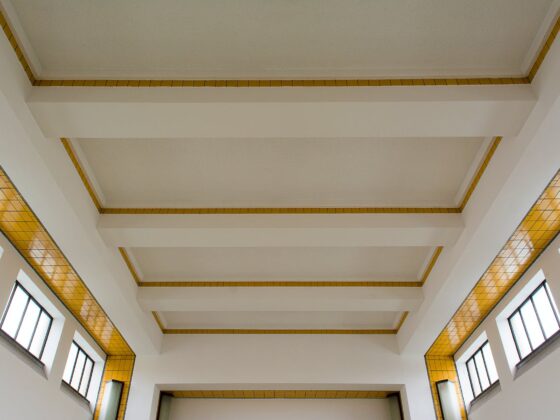Having ceramic tiles in your home is a great choice for their durability and aesthetic appeal. However, one common issue that many homeowners face is the challenge of keeping them clean. And when it comes to rust stains, they can be particularly stubborn and unsightly. But fear not! In this blog post, we’ll share some effective methods to help you remove rust stains from your ceramic tiles and restore their pristine appearance.

1. Lemon Juice and Salt
One of the easiest and most natural ways to tackle rust stains on ceramic tiles is by using lemon juice and salt. The citric acid in lemon juice works as a natural bleaching agent, while the abrasive texture of salt helps scrub away the rust.
To use this method, simply squeeze fresh lemon juice onto the rust stain and sprinkle a generous amount of salt over it. Let the mixture sit for a few minutes, then scrub the area gently with a soft brush or sponge. Rinse with water and repeat if necessary until the rust stain disappears.
The acid in the lemon juice breaks down the rust, while the salt acts as an abrasive to scrub it away. Here is how to use them:
- Cut a lemon in half and squeeze the juice into a small bowl.
- Add some salt to the lemon juice and stir to make a paste.
- Apply the paste to the rust stains on the tiles and let it sit for 15 to 20 minutes.
- Use a brush or a sponge to gently scrub the stains with the paste.
- Rinse the tiles with water and dry them with a cloth.
You may need to repeat the process for stubborn stains. You can also use white vinegar instead of lemon juice, as it has a similar acidic effect. However, you should avoid using lemon juice or vinegar on grout or sealant, as they can damage them. Instead, you can use baking soda or borax to clean the grout or sealant.
2. Vinegar and Baking Soda

Vinegar and baking soda are two versatile ingredients that can be found in almost every kitchen. When combined, they create a powerful cleaning solution that can effectively remove rust stains from ceramic tiles.
Here’s how to use them:
- Mix equal parts white vinegar and baking soda to form a paste.
- Apply the paste directly onto the rusty area and let it sit for 30 minutes.
- Gently scrub the stain with a brush or sponge.
- Rinse the tile with water and dry it with a cloth.
The vinegar and baking soda react to create carbon dioxide bubbles that help lift away the rust. The vinegar also helps to break down the mineral deposits that cause the rust, while the baking soda acts as a mild abrasive to scrub away the stain. This method is safe and effective for most types of ceramic tiles, but you should always test it on a small, hidden area first to make sure it does not damage the tile surface.
3. Commercial Rust Remover
If the DIY methods mentioned above don’t yield satisfactory results, you may want to consider using a commercial rust remover specifically designed for ceramic tiles. These products are readily available in most hardware stores and are formulated to tackle tough rust stains.
Commercial rust removers can come in different forms, such as liquids, sprays, gels, or pastes. Here are some steps to use them:
- Choose a commercial rust remover that is suitable for ceramic tiles. You can find them in hardware stores, online, or in some supermarkets. Some of the popular brands are Lime-A-Way, CLR, WD-40, and Rust-Oleum.
- Read the instructions and safety precautions on the product label carefully. Follow the recommended amount and application time for the rust remover. Wear gloves and eye protection and work in a well-ventilated area.
- Apply the rust remover to the rust stains on the tiles. Depending on the product, you may need to spray, pour, or rub it on the affected area. Avoid contact with the grout or sealant, as they may be damaged by the rust remover.
- Let the rust remover work for the specified time. Do not leave it on longer than recommended, as it may cause discoloration or damage to the tile.
- Scrub the rust stains gently with a brush or sponge. Rinse the tile with water and dry it with a cloth. Repeat the process if necessary until the rust stains are gone.
- Dispose of the used rust remover and cleaning materials properly. Do not mix the rust remover with other chemicals or cleaners, as it may cause harmful reactions.
Before using a commercial rust remover, it’s important to carefully read and follow the instructions provided by the manufacturer. Be sure to wear protective gloves and work in a well-ventilated area. Apply the rust remover to the stained area, let it sit for the recommended amount of time, and then scrub gently with a brush. Rinse thoroughly with water.
4. Preventing Future Rust Stains
Prevention is always better than cure, so here are a few tips to help you avoid future rust stains on your ceramic tiles:
- Regularly clean and dry your tiles to prevent moisture buildup, which can lead to rust formation.
- Use rust-resistant shower caddies or soap dishes to avoid direct contact between metal objects and your tiles.
- Consider applying a sealant to your ceramic tiles to provide an extra layer of protection against rust.
By following these preventive measures, you can reduce the likelihood of rust stains and keep your ceramic tiles looking their best for years to come.
Conclusion
Dealing with rust stains on ceramic tiles can be a frustrating task, but with the right techniques and products, you can restore the beauty of your tiles. Whether you opt for natural remedies like lemon juice and salt or choose to use a commercial rust remover, always remember to take proper precautions and follow the instructions provided. By taking preventive measures, you can also minimize the chances of rust stains in the future. So, say goodbye to those pesky rust stains and hello to gleaming ceramic tiles!
Frequently Asked Questions
Rust stains are caused by the oxidation of iron or steel. When these metals come into contact with moisture and oxygen, a chemical reaction occurs, resulting in the formation of rust. This rust can then transfer onto surfaces, leaving behind unsightly stains.
Preventing rust stains can be a challenge, but there are a few steps you can take. Firstly, try to keep metal objects dry and protected from moisture. Applying a protective coating or paint can also help to prevent rust formation. Regular maintenance and cleaning of metal surfaces can also help to prevent rust stains from occurring.
Removing rust stains can be a bit tricky, but there are several methods you can try. One common method is to use a mixture of lemon juice and salt. Apply the mixture to the stain and let it sit for a few hours before scrubbing it off. Another option is to use a commercial rust remover, following the instructions on the product. For stubborn stains, you may need to consult a professional.
Yes, rust stains can be removed from clothing, but it may require some effort. One method is to soak the stained area in lemon juice or vinegar for a few hours, then rinse and wash as usual. You can also try using a rust stain remover specifically designed for fabrics. Be sure to follow the instructions on the product and test it on a small, inconspicuous area first.
Rust stains themselves are not harmful, but they can be a sign of underlying issues. If you notice rust stains on surfaces or objects, it may indicate a problem with moisture or corrosion. It’s important to address these issues to prevent further damage and potential health hazards. Remember, prevention is key when it comes to rust stains. By taking proactive measures to protect metal surfaces and addressing any underlying issues, you can keep your home rust-stain-free and maintain its aesthetic appeal.












1 comment
Hy
I have good quality websites where organic tarffic in millions I can publish your article on high website